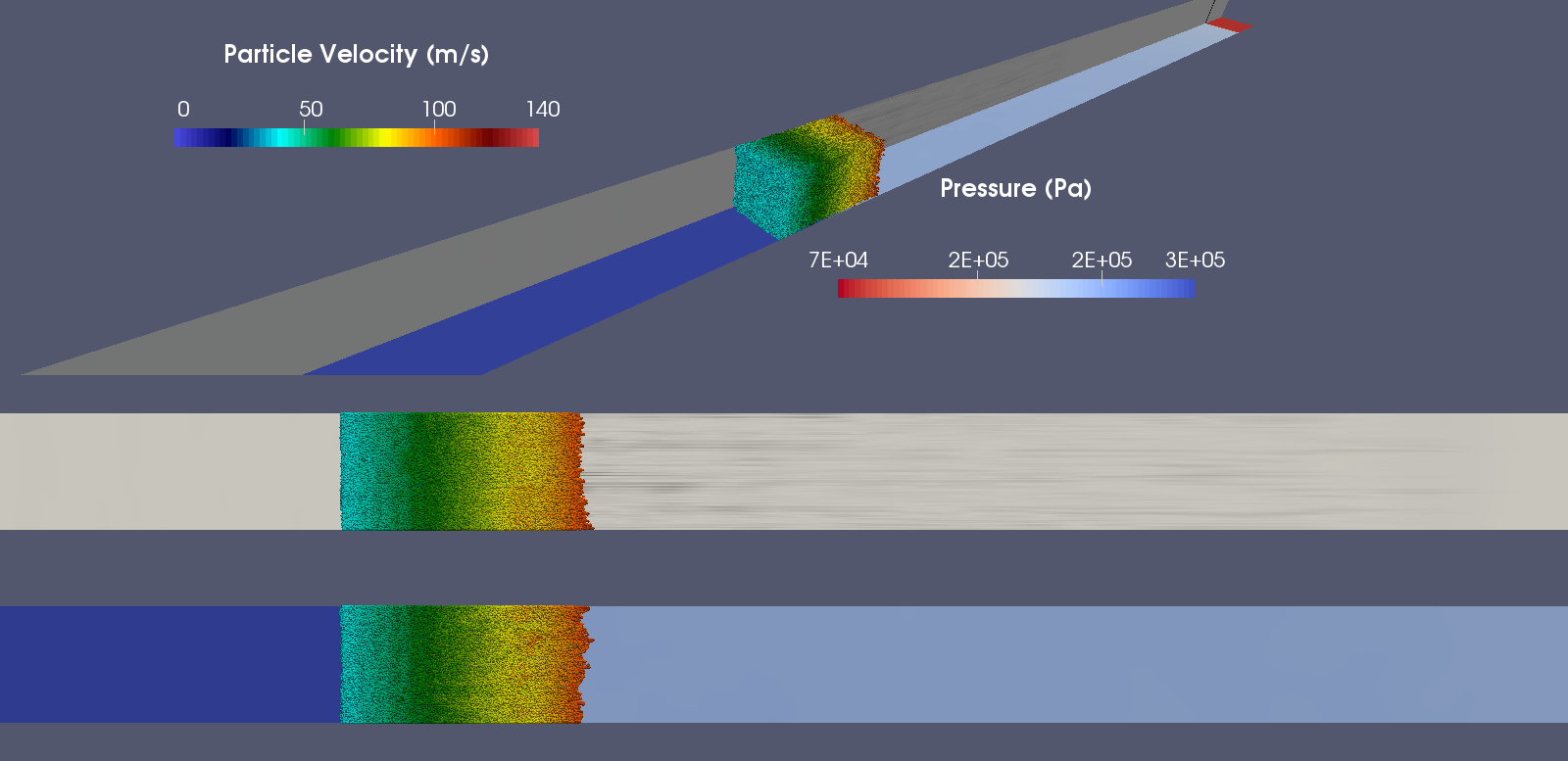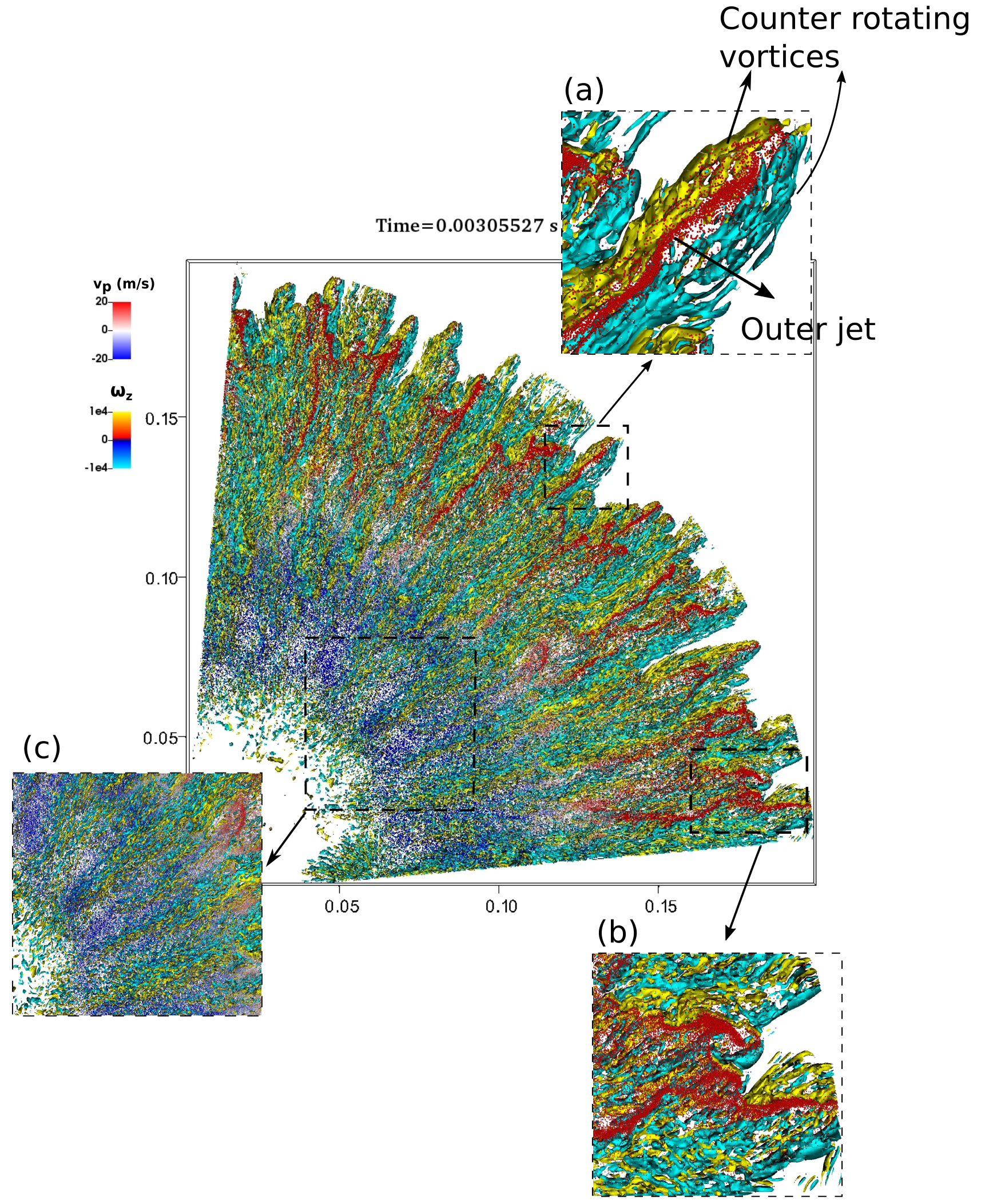Multiphase instabilities
Air-shock driven (Planar)
The interaction of a planar shockwave with dense bed of silicon particles is investigated using two-way coupled Euler-Lagrange simualtions. These simulations are compared against the experiments performed at the Multiphase Shocktube facility at the Sandia National Laboratories, New Mexico. These simulations are used to evaluate the performance of drag models [koneru2021], develop multifidelity surrogates [park2021] and investigate the growth of shock-driven multiphase instabilities [ouellet2022].

Fig. 1. (Top) Isometric view of a 2 mm thick particle bed at 20% volume fraction expanding upon being hit by a Mach 1.66 air shock. Density gradient and pressure are shown in the middle and bottom panes respectively.
Air-shock driven (Cylindrical)
Particle jetting in a dense bed, driven by a cylindrical shock, is investigated in a thin Hele-Shaw cell. The jet-like strutures are generated as the vorticity channels particles into low volume fraction regions. Particle jets are seen to preferentially accumulate between the vortex pairs. The simulations were carried out using CMT-nek and a high-order Lagrangian particle method (precursor to ppiclF). For more information, see the published paper.

Fig. 2. Isocontours of vorticity along the z-direction along with the dispersed particles. (Inset) Close-up view of the counter-rotating vortex pairs.
Energetic material driven
Dispersion of dense particle beds caused by energetic materials is investigated to ascertain the role of multiphase instabilities in the formation of particle jets observed in experiments. Watch the video of a blast wave driven particle dispersal. For more information, see the published paper.

Fig. 3. Dispersion of annular particle bed subejected to a blast wave. The particles are shown in the lower half colored by particle volume fraction and the gas velocity magnitude is shown in the upper half.
